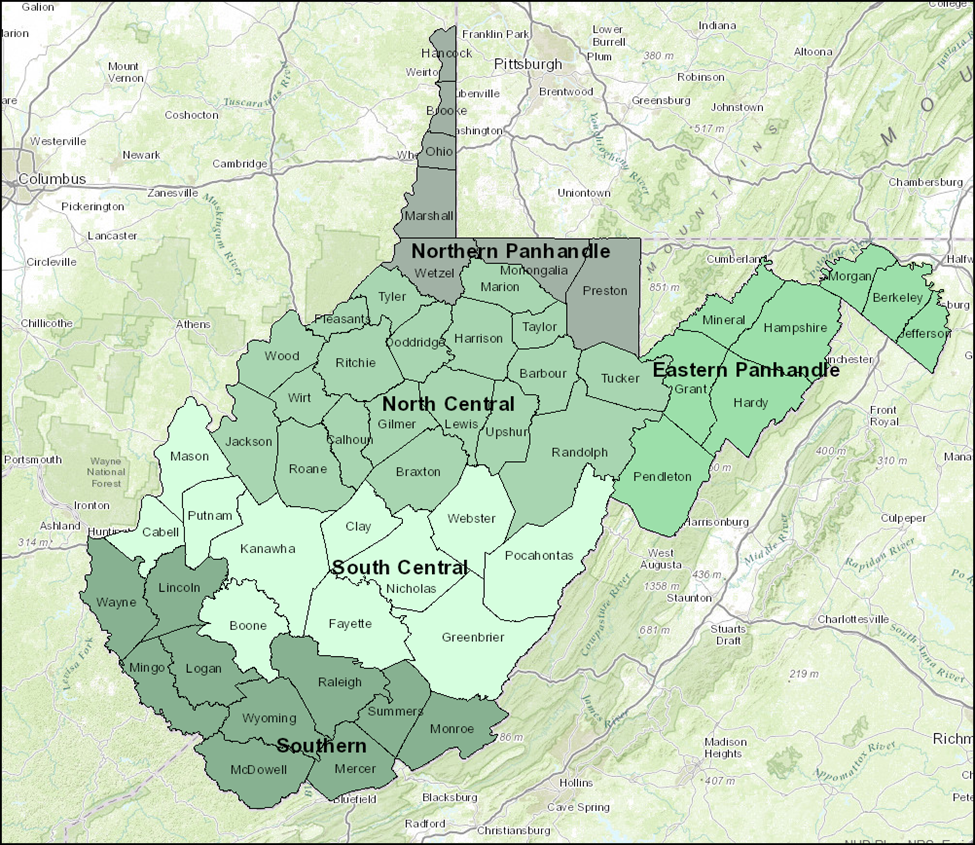Introduction
Gender plays an important role in the social and economic fabric of our society. This project explores the status of women in light of the gendered norms and learned behavior that shape men’s and women’s economic activities, health status, educational attainment, as well as other indicators of overall well-being.
Women in West Virginia are the foundation of many communities and fulfill important roles as they work to maintain healthy and vibrant households in the state. This website provides information about the economic, social, and health status of women and children in West Virginia through an interactive map, tables, and figures.
Data from this project highlight the uneven development and socio-economic contrasts between rural and urban areas in West Virginia and throughout the Appalachian Region. In particular, the easily accessible and interactive maps and figures on this website are useful resources for policymakers, academics, citizens, and activists who are involved in improving the conditions for all people in West Virginia.
Click on the "Launch Map" button to access this map and figures!
|
|
3) Economic Security and Poverty
Labor force participation or the economic activity rate of West Virginians is lower than the nation as a whole, particularly for women in rural areas where transportation costs and caretaking responsibilities are barriers to employment. The relatively high poverty rate among women in the state is one of the consequences of this low economic activity. This section addresses other factors that contribute to the lack of economic security among both women and men in West Virginia.
4) Health and Education.
Health issues related to diabetes, obesity, and cancer present significant challenges to West Virginia women. One of the reasons behind these health issues is limited access to health care practitioners and services. Additionally, approximately one fifth of women aged 18-64 are without basic health insurance. Education is one way of improving these health challenges. While educational attainment in West Virginia is still lower than the nation, the share of women with at least a bachelor’s degree has increased from 1990 to 2010.
For each of these themes, data are organized by region in West Virginia. These five regions are areas with somewhat similar socio-economic and geographic features and include the Northern Panhandle, North Central, Eastern Panhandle, South Central and Southern West Virginia.
The inclusion of maps and geographically defined data illustrates important spatial aspects of the gendered social and economic characteristics of this state.
Please contact Ann M. Oberhauser at West Virginia University with any questions or comments relating to the site.


 This project draws from data and information provided by
This project draws from data and information provided by